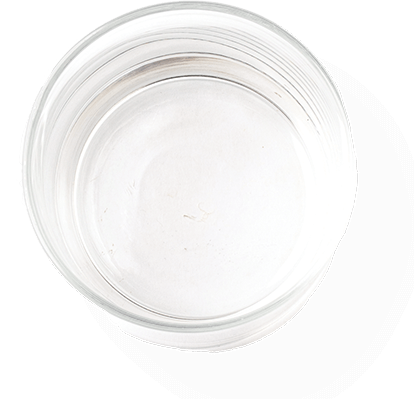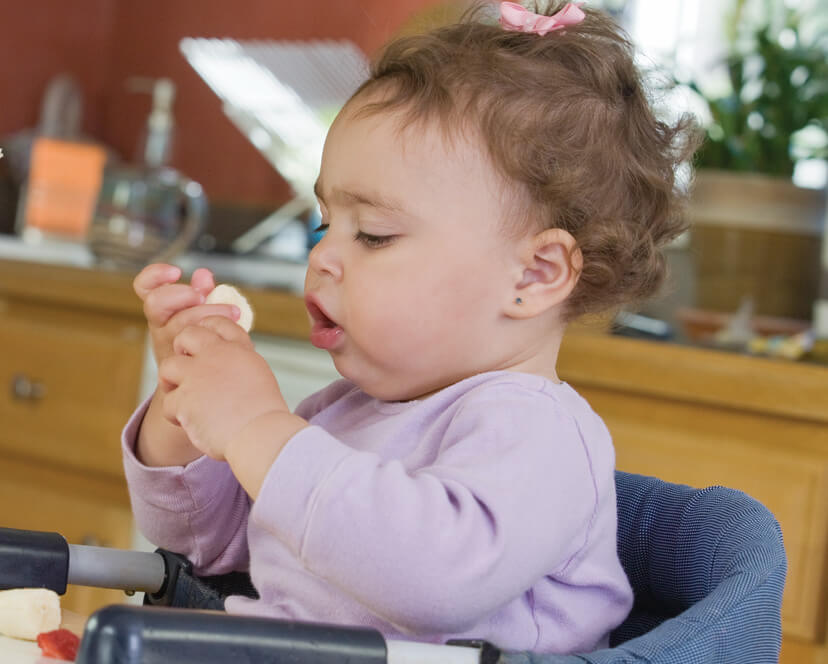
Your Child’s Ready To Eat Most of the Foods You Do!
Over the next year, your toddler will change a lot and soon will eat more like you do. Help them learn how to feed themselves, enjoy healthy foods and TRY NEW FOODS!
WHAT TO OFFER:
- Start with small amounts, about 1 to 2 tablespoons of each food. Offer more if your child wants.
- Offer a new food along with a familiar food. If your child doesn’t like a new food right away, that’s ok! Offer it again at another time.
- WIC food benefits include 100% juice—no added sugar. Limit to ½ cup a day.
HOW TO OFFER:
- Let your child use their spoon, fingers or both. They learn by smelling, tasting and touching food.
- Cut food into small, bite-sized pieces no bigger than your thumbnail.
- Never force your child to eat. Let them choose what and how much they want to eat.
- Begin offering all drinks in an open cup to protect your child’s teeth.
WHEN TO OFFER:
- Toddlers have small stomachs, about the size of their fist and need to eat often. Offer 3 meals (breakfast, lunch, dinner) and 2 or 3 snacks each day.
- Offer water between meals and snacks. This way your child will be hungry – but not too hungry – when it is time for the next meal or snack. This will also help protect your child’s teeth.
- Your child may eat more on some days than others.
WHERE TO OFFER:
- Eat with your toddler and let them be part of family meals. They learn so much from you.
- To be safe, have your toddler sit up at a table, supported and in a highchair, booster seat or in your lap when eating.



Here are some examples of what meal and snack portion
sizes might look like:
Your child may eat more or less than these amounts.
Breakfast
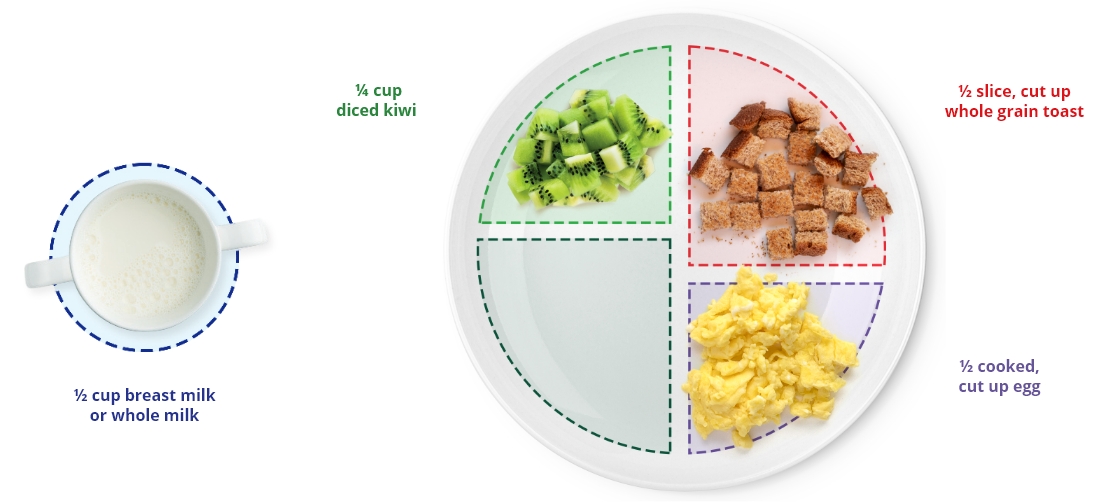
Morning Snack
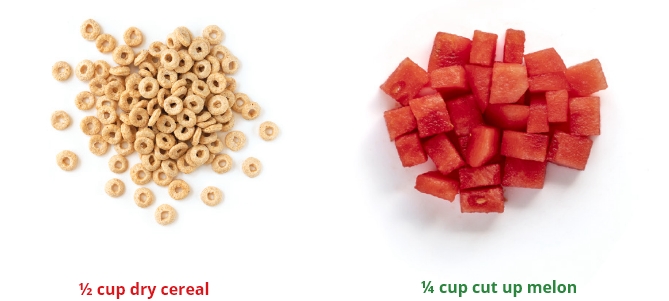
Lunch
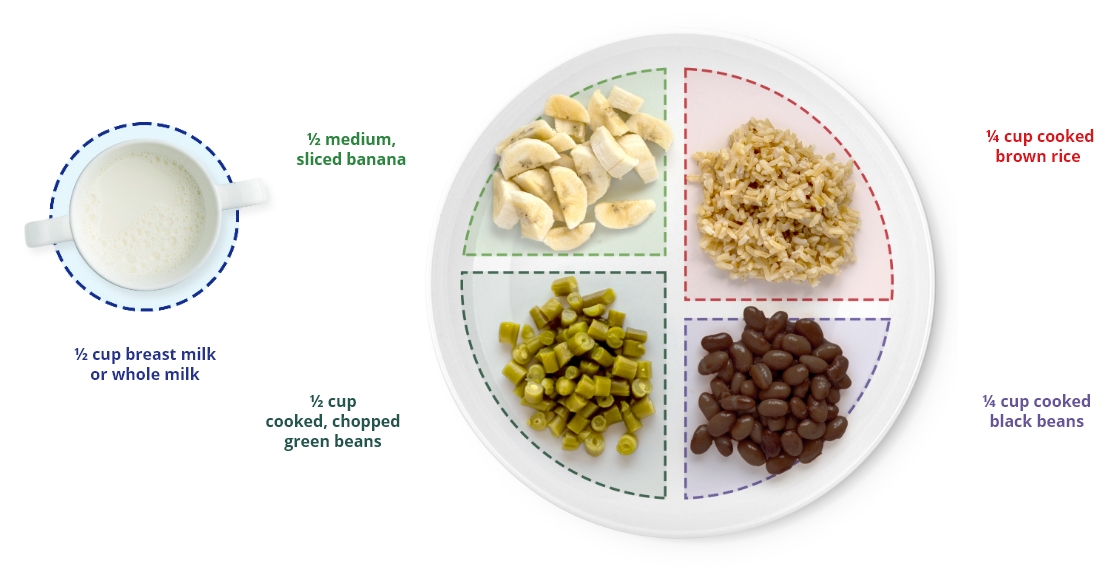
Afternoon Snack
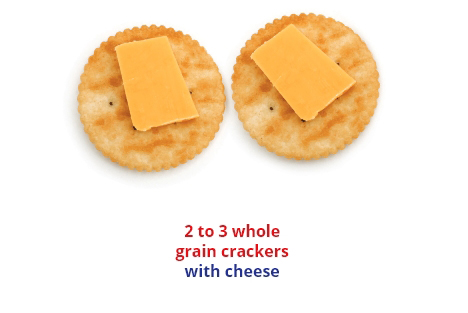
Dinner
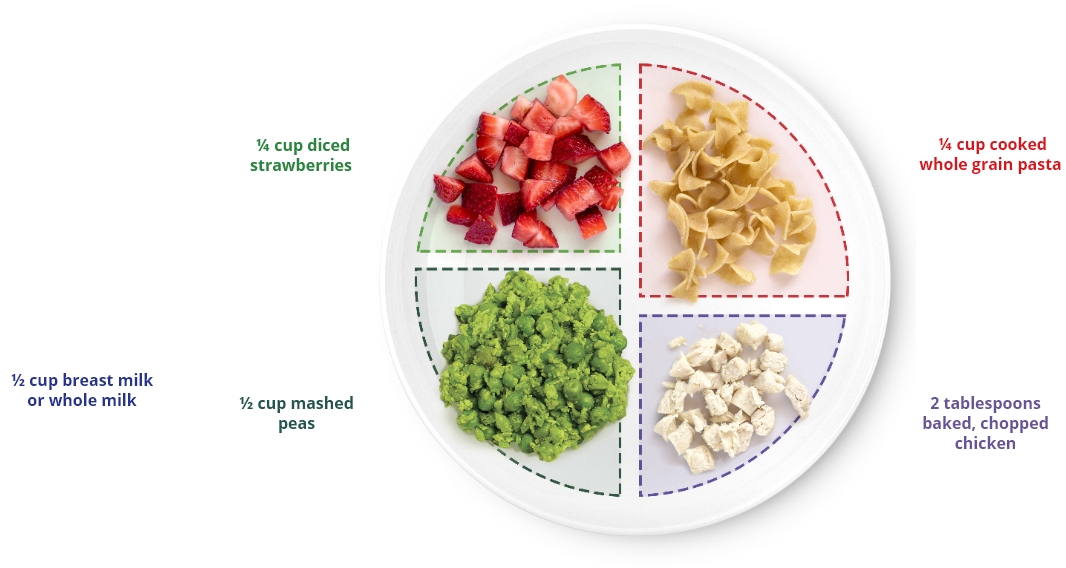

Fruits
 2 servings a day
(1 cup total)
1 serving = ½ cup
2 servings a day
(1 cup total)
1 serving = ½ cup
Cooked or soft, raw fruit.
Mashed, sliced or chopped.
Offer a variety: red, yellow, orange, blue and green.
Vegetables
 2 servings a day
(1 cup total)
1 serving = ½ cup
2 servings a day
(1 cup total)
1 serving = ½ cup
Cooked and mashed, sliced or chopped veggies.
Offer a variety: dark green, orange, red, yellow and purple.
Grains
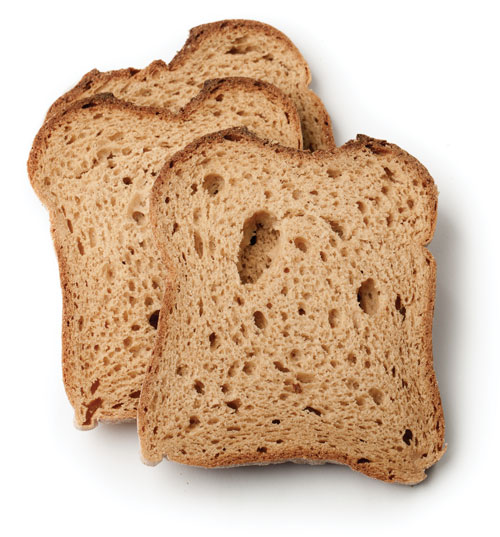 6 servings a day
(3 ounces total)
1 serving = ½ ounce
6 servings a day
(3 ounces total)
1 serving = ½ ounce
Bite-sized pieces.
½ slice whole grain bread or tortilla.
¼ cup rice or noodles.
½ cup dry or ¼ cup cooked cereal.
Proteins
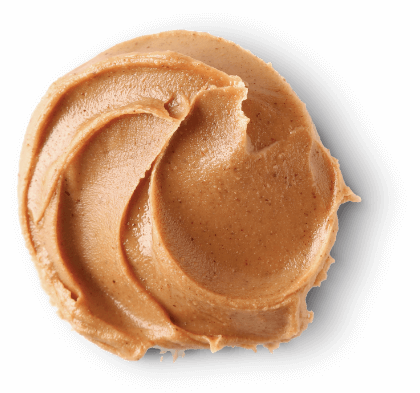 2 servings a day
(2 ounces total)
1 serving = 1 ounce
2 servings a day
(2 ounces total)
1 serving = 1 ounce
Size of 3 dice-sized cubes cooked lean meat, poultry or seafood.
1 egg.
¼ cup cooked beans, peas or tofu.
1 tablespoon peanut butter.
Dairy
 4 servings a day
(2 cup total)
1 serving = ½ cup
4 servings a day
(2 cup total)
1 serving = ½ cup
Breast milk (at breast or expressed) or whole milk.
Yogurt.
Cheese.
Other option: Soy milk.
Breastfeeding
Breastfeeding continues to be a good source of nutrition for your toddler. Continue to breastfeed as long as you and your toddler would like. Nursing about 3-5 times a day is common.

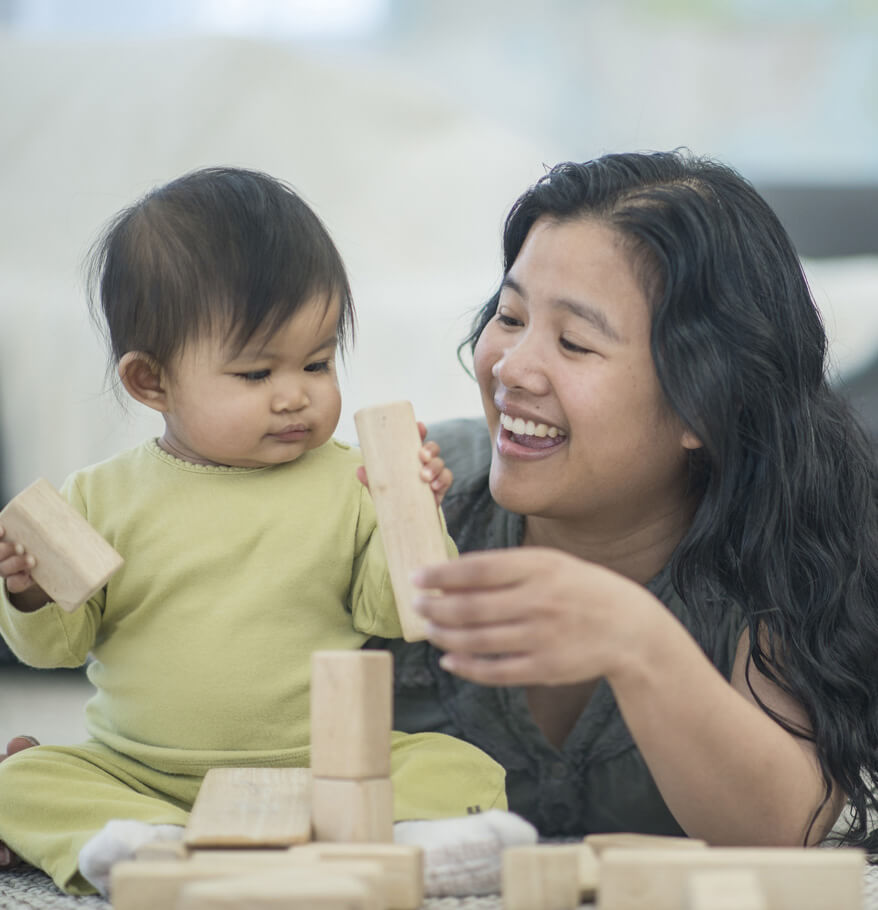
Look What I Can Do!
- Your child can understand a lot of what you say. Read, talk and sing to them so they can learn more!
- Your child can use their hands to stack blocks, throw a ball and push and pull toys.
- Track your child’s development with easy-to-use checklists, visit
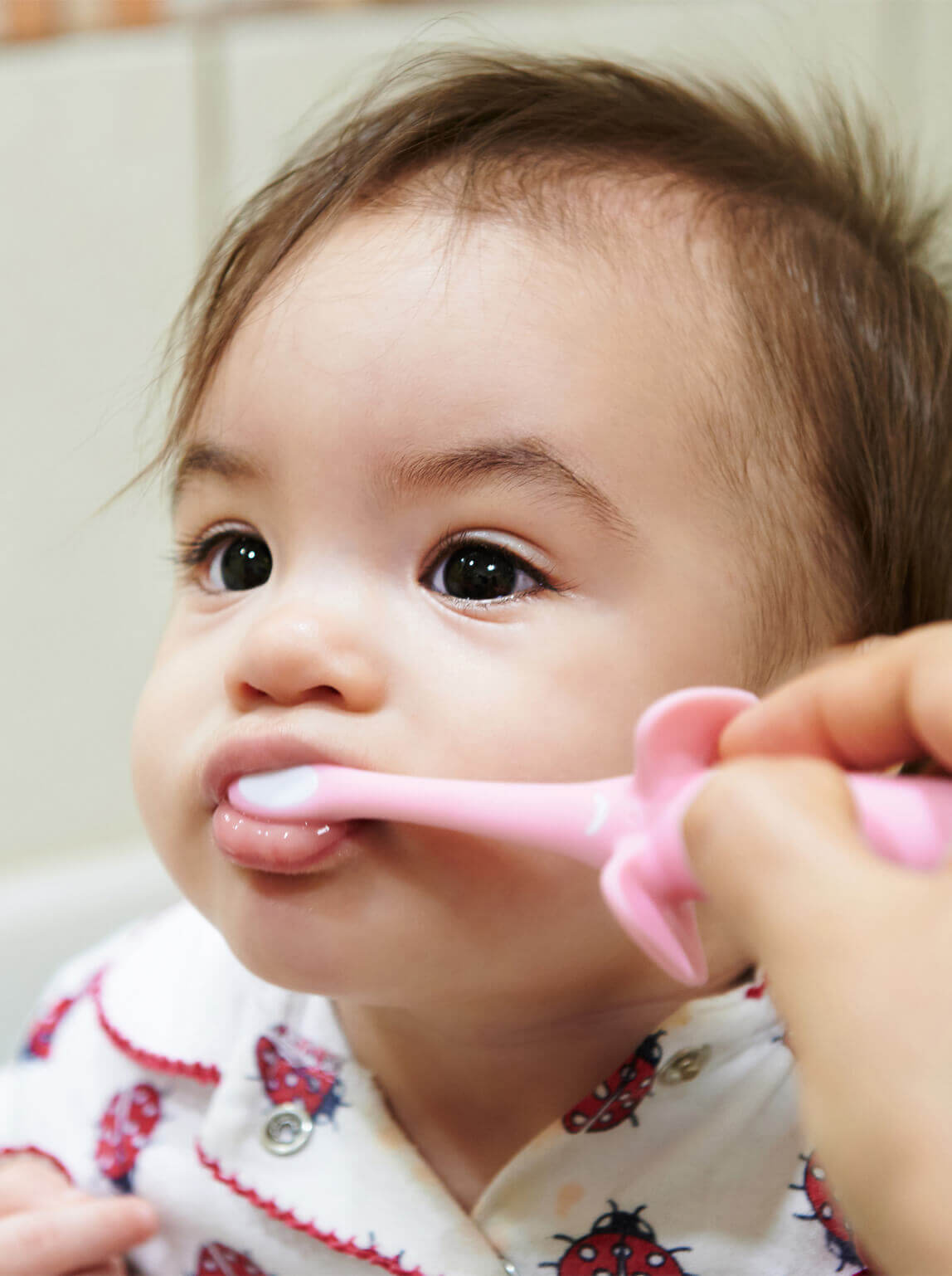
Keep Me Safe
and Healthy
- Do not give foods your child could choke on like whole nuts, hard candies. Chop round food into bite-sized pieces like grapes, hot dogs.
- Take your child to the dentist. Brush teeth twice a day with a small, soft toothbrush and use toothpaste with fluoride.
- Most of a toddler’s brain development happens in the first 2 years of life. Before age two, turn off the TV, phones and other devices. Your child learns best when you play, talk, read and sing to them. When your child turns 2, limit TV and other devices to one hour a day. Choose educational shows and use them together.
This is how toddlers learn best!




